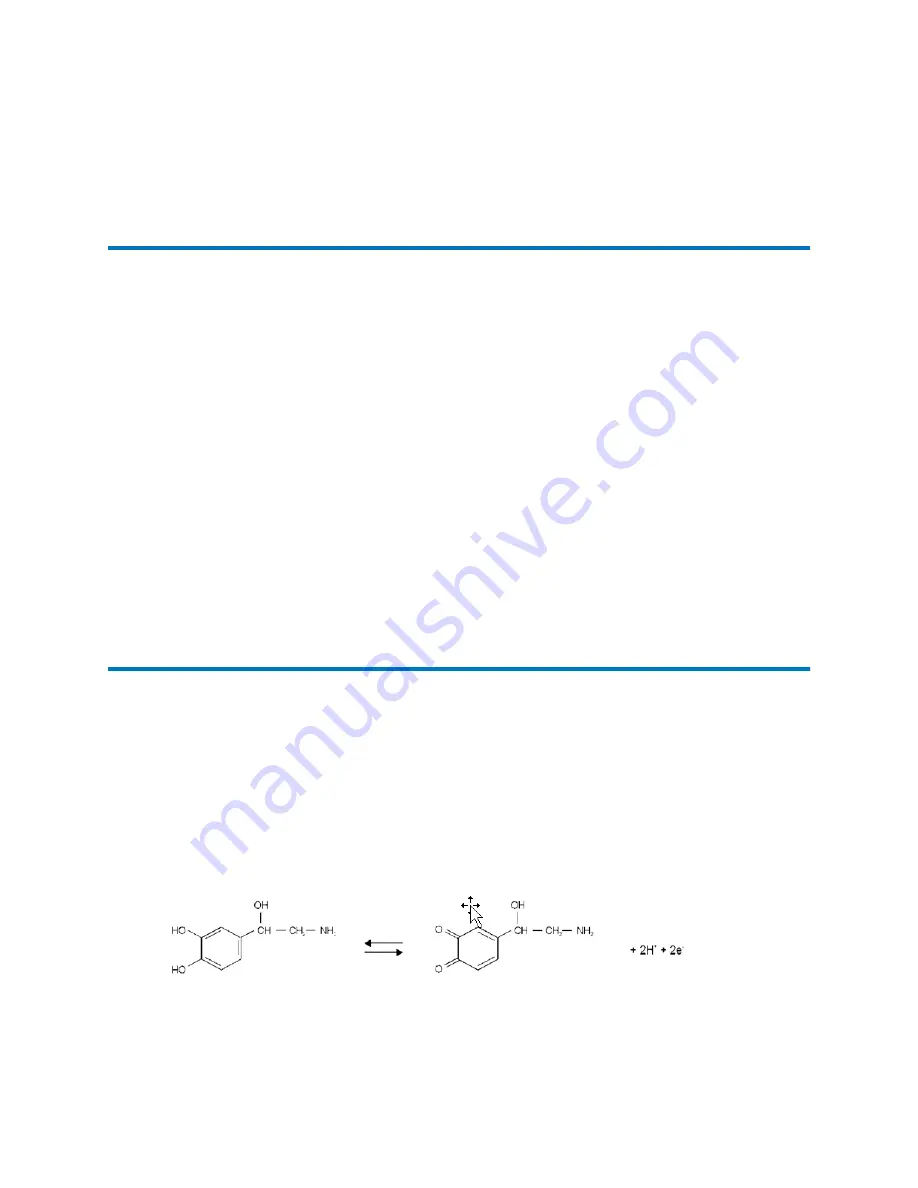
9 Optimization of the working potential
9.1 Introduction
A current/voltage (I/E) relationship, or voltammogram, characterizes an analyte. It gives
information on the optimum working potential, which can be used to improve detection sensitivity
and selectivity.
There are several ways to obtain a voltammogram:
• A hydrodynamic voltammogram is obtained in DC mode by running several chromatograms
at different working potentials. Both peak height and background current are plotted against
the working potential. The hydrodynamic voltammogram has an advantage in that the I/E
relationship of all analytes of interest can be obtained simultaneously in one set of
experiments (boundary condition: all analytes should be sufficiently separated under the
applied LC conditions). Furthermore, under real chromatographic conditions, reliable
information about the S/N ratio is obtained.
• A scanning voltammogram is obtained in the “scan” mode of the 3465 Detector: the voltage
runs between two preset potential values (E1 and E2) and scan speed (in mV/s), and the
current is measured.
9.2 Electrochemical reactions
In electrochemical detection (ECD), a reaction of the analyte at an electrode surface is
monitored. This distinguishes ECD from most other detection techniques in which detection is
based on the physical properties of an analyte (molecular mass in mass spectrometry; molar
absorptivity in absorbance detection). For electrochemically active compounds, the potential
between reference electrode (REF) and working electrode (WE) determines the reactivity of the
analyte at the WE. The potential difference supplies the energy level needed to initiate or
enhance the electrochemical reaction. Different analytes may have different oxidation or
reduction potentials, which determines the selectivity of ECD.
Figure 9–1: Oxidation/reduction of norepinephrine
This is an example of an electrochemical reaction. Norepinephrine is converted into a quinone by
oxidation at the WE. Two electrons are transferred at the WE, resulting in an electrical current
that is amplified by the controller.
December 16, 2021, 715007395 Ver. 00
Page 76
















































